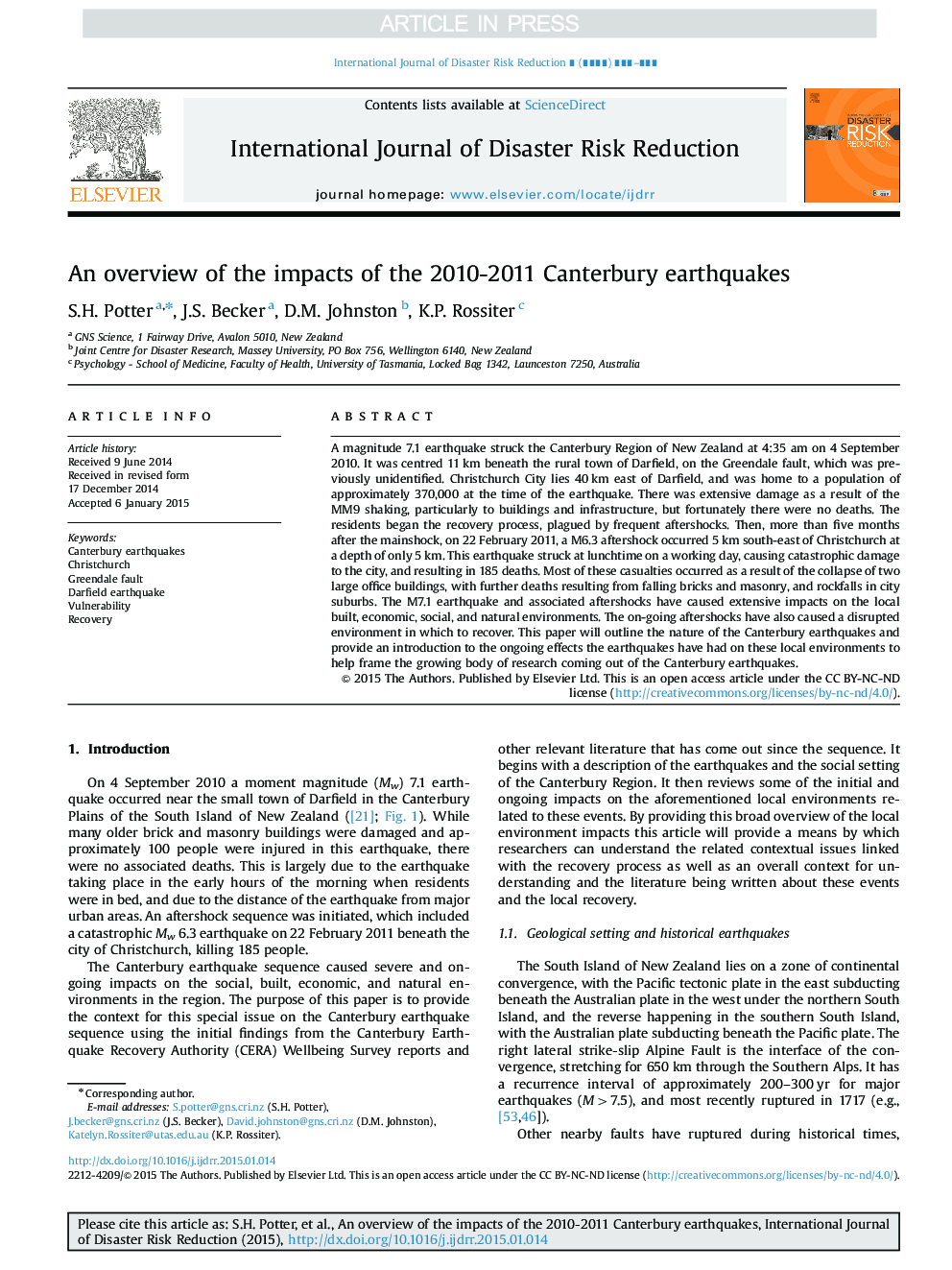| Article ID | Journal | Published Year | Pages | File Type |
|---|---|---|---|---|
| 7472963 | International Journal of Disaster Risk Reduction | 2015 | 9 Pages |
Abstract
A magnitude 7.1 earthquake struck the Canterbury Region of New Zealand at 4:35 am on 4 September 2010. It was centred 11Â km beneath the rural town of Darfield, on the Greendale fault, which was previously unidentified. Christchurch City lies 40Â km east of Darfield, and was home to a population of approximately 370,000 at the time of the earthquake. There was extensive damage as a result of the MM9 shaking, particularly to buildings and infrastructure, but fortunately there were no deaths. The residents began the recovery process, plagued by frequent aftershocks. Then, more than five months after the mainshock, on 22 February 2011, a M6.3 aftershock occurred 5Â km south-east of Christchurch at a depth of only 5Â km. This earthquake struck at lunchtime on a working day, causing catastrophic damage to the city, and resulting in 185 deaths. Most of these casualties occurred as a result of the collapse of two large office buildings, with further deaths resulting from falling bricks and masonry, and rockfalls in city suburbs. The M7.1 earthquake and associated aftershocks have caused extensive impacts on the local built, economic, social, and natural environments. The on-going aftershocks have also caused a disrupted environment in which to recover. This paper will outline the nature of the Canterbury earthquakes and provide an introduction to the ongoing effects the earthquakes have had on these local environments to help frame the growing body of research coming out of the Canterbury earthquakes.
Related Topics
Physical Sciences and Engineering
Earth and Planetary Sciences
Geophysics
Authors
S.H. Potter, J.S. Becker, D.M. Johnston, K.P. Rossiter,
